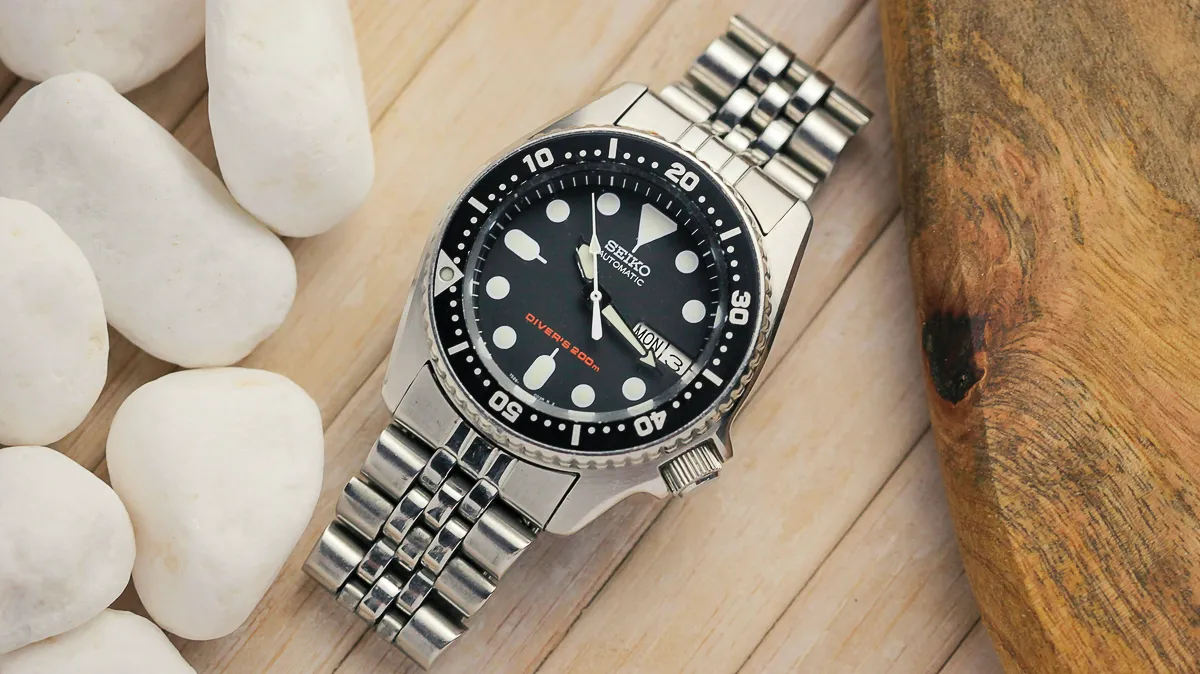Why Some Luxury Dive Watches Aren’t ISO 6425 Certified
Major luxury watchmakers like Rolex and Omega frequently opt out of ISO 6425 certification for their dive watches, despite their timepieces meeting or exceeding many of the standard’s requirements. This strategic decision stems from several practical and market-driven factors.
The certification process requires extensive third-party testing and documentation, which can delay product launches and increase production costs. Many prestigious manufacturers instead prioritize COSC chronometer certification, which carries greater marketing value in the luxury segment. The Omega Seamaster and Rolex Submariner, while technically capable of meeting ISO 6425 standards, rely on their established reputations and internal testing protocols.
Cost considerations also play a significant role, particularly for mass-produced luxury models. Each watch in a certified series must undergo individual testing, including 48-hour water resistance checks, magnetic resistance verification, and shock resistance trials. For brands producing thousands of units annually, this comprehensive testing regime becomes logistically challenging and economically burdensome.
Additionally, luxury brands often implement their own testing standards that exceed ISO 6425 requirements. For instance, while ISO 6425 mandates water resistance to 100 meters, many high-end dive watches are tested to depths of 300 meters or more. These manufacturers maintain that their proprietary standards and quality control measures provide sufficient assurance of performance and reliability.
- Notable Exception: The Omega Seamaster Planet Ocean Ultra Deep stands as one of the few luxury dive watches with ISO 6425 certification, demonstrating that some manufacturers selectively pursue certification for flagship models.
The absence of ISO 6425 certification among luxury dive watches reflects a market reality where brand reputation and alternative certifications often carry more weight than standardized diving specifications.
The Surprising History Behind the ISO 6425 Standard
The International Organization for Standardization established ISO 6425 in 1982 during a pivotal transformation in recreational diving. Prior to this era, SCUBA diving remained largely confined to military personnel, scientists, and professional divers who relied on timepieces from pioneering manufacturers like Rolex, Blancpain, and Zodiac.
The emergence of Divetronic AG’s dive computers in the 1980s marked a significant shift in underwater timekeeping technology. These digital instruments provided superior accuracy and reliability compared to traditional mechanical dive watches. This technological advancement, coupled with the growing popularity of recreational diving, created a complex market dynamic where dive watches began transitioning from essential survival tools to luxury accessories.
The proliferation of dive-style watches in the market, including models with inadequate water resistance below 100 meters, prompted the need for standardization. Watch manufacturers were increasingly producing timepieces that merely resembled professional diving instruments without matching their technical capabilities. This trend created potential safety concerns and market confusion.
The ISO 6425 standard underwent significant revisions in 1984, 1996, and 2018, reflecting the evolution of diving technology and safety requirements. These updates strengthened the certification’s relevance, establishing comprehensive testing protocols for water resistance, magnetic fields, shock absorption, and luminescence. The standard’s development represented a crucial intersection between the watch industry’s commercial interests and the practical requirements of professional diving.
The creation of ISO 6425 served dual purposes: providing clear guidelines for manufacturers and offering consumers a reliable benchmark for evaluating dive watch capabilities. This standardization emerged as a response to market demands rather than regulatory requirements, demonstrating the watch industry’s commitment to maintaining professional standards despite the increasing commercialization of dive watches.
How Dive Watches Are Tested for ISO 6425 Certification
The rigorous testing process for ISO 6425 certification encompasses multiple stages of evaluation conducted by accredited third-party laboratories. Each timepiece undergoes a minimum 48-hour water resistance test at 125% of its rated depth, significantly more demanding than standard water resistance testing protocols.
The certification process begins with baseline functionality tests, where examiners verify the watch’s timekeeping accuracy within ±30 seconds per day before exposure to environmental stressors. The timepiece must then demonstrate resistance to magnetic fields of 4,800 A/m while maintaining this accuracy standard, in accordance with ISO 764 specifications.
Physical durability testing includes shock resistance evaluations, where watches must survive a standardized impact from a 3kg hammer and a one-meter drop onto hardwood flooring. Thermal shock testing exposes the watch to temperature extremes, from -20°C to +40°C, to simulate real diving conditions.
- Water resistance protocol: Watches undergo pressurization at 25% above rated depth capacity, followed by thermal shock testing and crown manipulation tests while submerged
- Legibility assessment: Luminescence must remain visible for 180 minutes in darkness after exposure to 1000-lux illumination
- Corrosion resistance: Salt spray exposure testing lasting multiple hours to simulate marine environment exposure
- Bezel functionality: Unidirectional rotation mechanism must maintain proper indexing after 120 cycles of operation
The final phase involves condensation testing, where watches are heated to 40°C, then immediately exposed to room temperature water. Any formation of condensation under the crystal results in immediate failure. Only watches that pass every test receive official certification, with documentation provided by the testing facility.
The Hidden Differences Between ISO Compliance and Certification
A significant distinction exists between watches that are merely ISO 6425 compliant versus those carrying official certification. The International Organization for Standardization does not directly certify timepieces but instead accredits over 1,000 third-party organizations to perform the certification process.
Many prominent manufacturers, including Seiko and Certina, produce dive watches that meet ISO 6425 standards through internal testing protocols. However, these watches lack independent verification from accredited certification bodies. This self-regulated compliance, while potentially meeting all technical requirements, differs fundamentally from certified models that undergo rigorous third-party testing.
The certification process involves comprehensive testing by authorized organizations like METAS (Swiss Federal Institute of Metrology). The Omega Seamaster Planet Ocean Ultra Deep represents a rare example of a luxury timepiece carrying official ISO 6425 certification, distinguishing it from the standard Seamaster line which, despite its capabilities, remains only compliant.
The financial implications of certification versus compliance manifest differently across market segments. While luxury manufacturers often prioritize chronometer certification over ISO 6425, mid-tier brands like Sinn have embraced official dive watch certification as a distinguishing feature. Citizen and Helm demonstrate that ISO compliance can be achieved at more accessible price points without the additional cost burden of formal certification.
The practical difference primarily lies in verification: certified watches undergo standardized testing by independent bodies, while compliant watches rely on manufacturer testing to meet the same technical specifications. This distinction, though significant for documentation purposes, may not necessarily reflect real-world performance differences between certified and compliant timepieces.
Beyond water resistance and timing capabilities, ISO 6425 certification demands several unexpected yet crucial features that distinguish genuine dive watches from mere water-resistant timepieces:
- Anti-magnetic Protection: Watches must maintain accuracy within ±30 seconds per day when exposed to magnetic fields of 4,800 A/m, adhering to ISO 764 standards. This requirement protects against interference from diving equipment and underwater instruments.
- Enhanced Legibility Standards: The ISO 17514 requirement mandates visibility in darkness for 180 minutes after light exposure, ensuring divers can read critical information throughout extended dives. This includes distinct minute markings and clear contrast between dial elements.
- Shock Resistance Testing: Timepieces must survive specific impact tests, including a double hammer strike at predetermined force and a one-meter drop onto hardwood flooring, validating their durability in harsh underwater conditions.
- Crown Security Features: The crown must withstand water pressure 25% beyond the watch’s stated water resistance rating, with additional requirements for screw-down mechanisms and protection against accidental manipulation.
- Corrosion Resistance: Certified watches undergo rigorous salt spray testing to ensure materials resist degradation from prolonged exposure to seawater and marine environments.
- Condensation Protection: Internal fogging prevention is verified through thermal shock tests, exposing watches to rapid temperature changes that simulate real diving conditions.
- Unidirectional Bezel Security: Beyond mere rotation, bezels must demonstrate resistance to accidental adjustment and feature mandatory markings at five-minute intervals for precise dive timing.
These specifications ensure that ISO 6425 certified watches serve as reliable backup instruments for professional divers, though brands like Seiko Prospex and Citizen often meet these requirements without pursuing formal certification.

